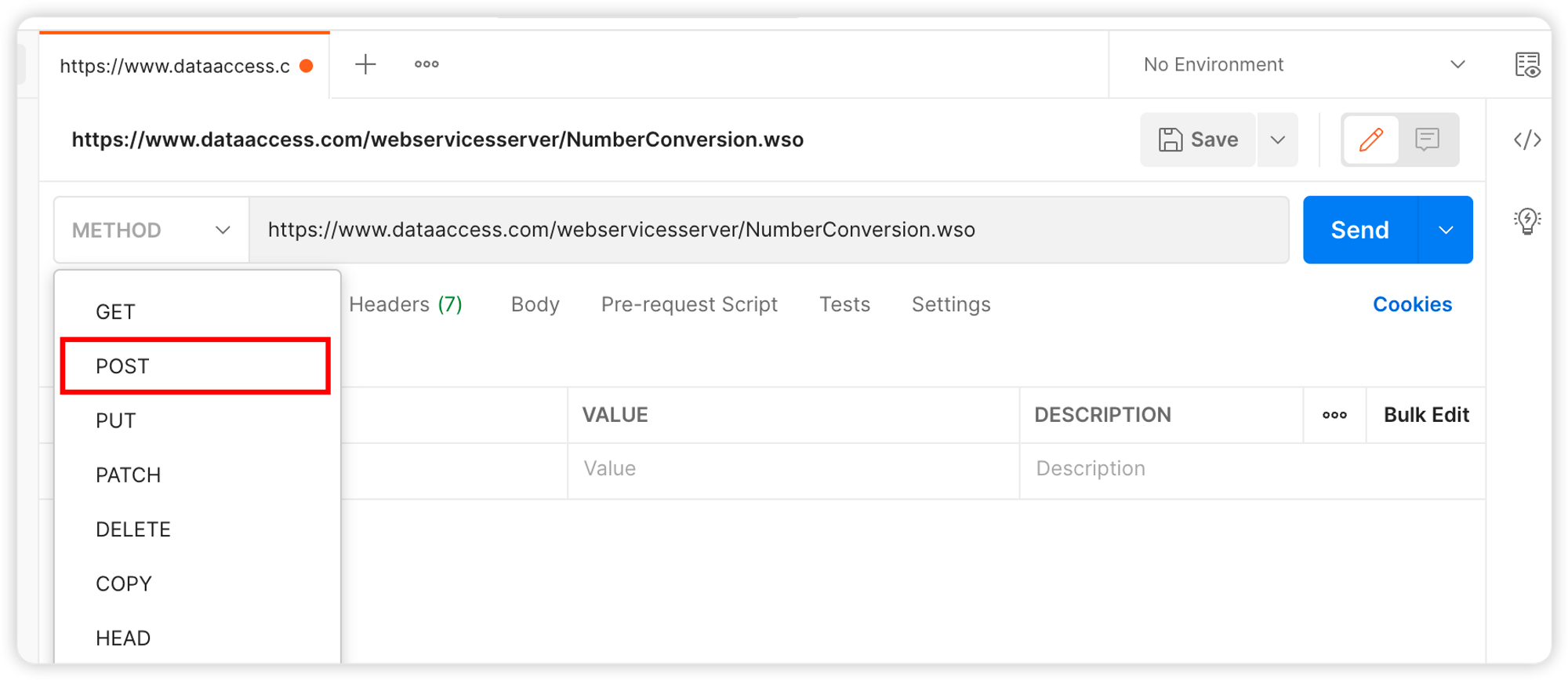Sending SOAP Requests with Postman
SOAP is an XML-based communication protocol used for exchanging structured data on the web. This comprehensive article will guide you step-by-step on how to efficiently send SOAP requests using Postman.
SOAP (Simple Object Access Protocol) is an XML-based communication protocol used for exchanging structured data on the web. Postman can be used to test and debug various types of APIs and supports making HTTP calls using the platform-agnostic messaging protocol specification of SOAP. This article will guide you on how to send SOAP requests using Postman. Check it now.
What is a SOAP Request?
A SOAP (Simple Object Access Protocol) request is a type of message protocol used in web services to communicate between different systems over the internet. It typically consists of an XML-based message containing information such as the request's action, parameters, and data.
SOAP requests are structured according to a specific schema defined by the SOAP protocol, and they are typically sent via HTTP or HTTPS. They are commonly used in enterprise-level applications for exchanging structured information between systems regardless of their underlying platforms or programming languages.
What is SOAP Used for?
SOAP is primarily used for web services that require a standardized and extensible communication protocol, enabling seamless interaction between diverse systems and platforms.
It provides a set of rules for structuring messages, defining how they are sent and processed, making it a fundamental component in various applications such as web services, enterprise-level integrations, and other distributed computing environments where interoperability and communication consistency are crucial.
Can SOAP Requests be made in Postman?
Yes, SOAP requests can be made in Postman. Although Postman is primarily known for its support of RESTful APIs, it also offers features for testing SOAP APIs. You can create SOAP requests in Postman by selecting the "Raw" tab when creating a new request, then formatting the XML-based SOAP request body according to the SOAP protocol specifications.
How to Test SOAP API in Postman?
Before diving into SOAP API testing in Postman, let's explore the step-by-step process.
Step 1. Create a SOAP Request
To initiate SOAP API testing in Postman, start by creating a SOAP request. You can open Postman and create a new request. Here, we need to set the request method to POST and set the URL to the endpoint URL of the SOAP API.

Step 2: Set HTTP Headers
In the request headers, we need to set the Content-Type to "text/xml" and the SOAPAction to the API method being called.
- Uncheck the default "Content-Type:
application/xmlfield generated in the Headers tab. - Create a new field called "Content-Type" and set its value to
text/xml. - Create a new field called "SOAPAction" and set its value to
"#POST"(e.g.,"#MethodName"). Note that the value should be enclosed in quotes.

Step 3. Build Constructing SOAP Request Body
First, we need to define the SOAP Envelope, Header, and Body using XML format. Click on Body, select raw, and choose XML. Then, enter the XML content in the text area.

This SOAP endpoint converts numeric values to their equivalent text representation. In this case, it changes the value 500 to "five hundred".
Step 4: Send the SOAP Request and View the Response in Postman
After constructing the SOAP request body, we can click the Send button to send the request. Postman will send the request to the SOAP API endpoint and return the response. We can view the response content in the Response tab.
If the response is returned in XML format, we can view the XML content of the response and the parsed response data in the Response tab.

Apidog: The Superior Alternative to Postman for API Testing
Apidog is an advanced tool that offers more convenience compared to Postman. While you now know how to send SOAP requests using Postman, you can consider using Apidog for testing your SOAP API. Apidog is an all-in-one API collaboration platform that enables API documentation, debugging, mocking, and automated testing. It is a cutting-edge tool for API design, development, and testing.

With Apidog, you can streamline your API workflow by designing, debugging, testing, and collaborating on your APIs within a unified platform. It eliminates the need for switching between different tools and ensures consistency in data. Apidog simplifies your API workflow and facilitates efficient collaboration among frontend, backend, and testing teams.



